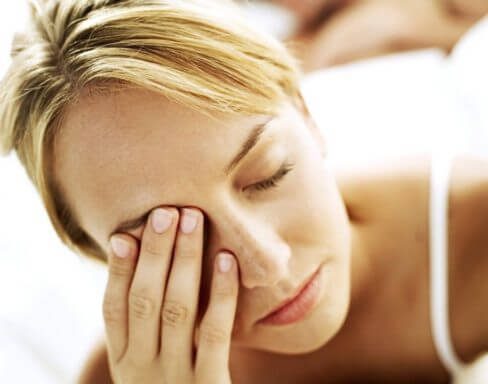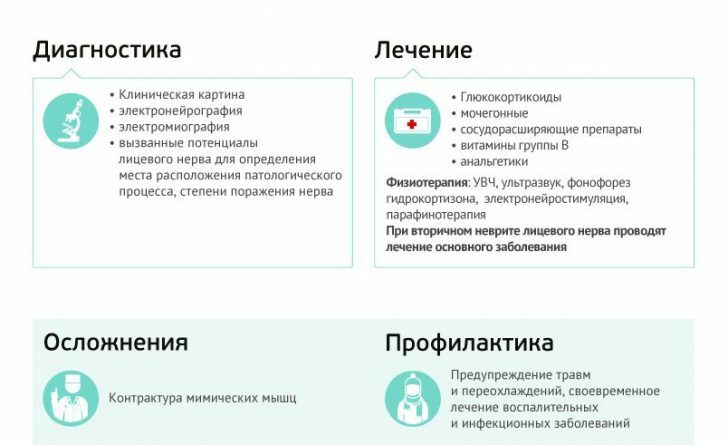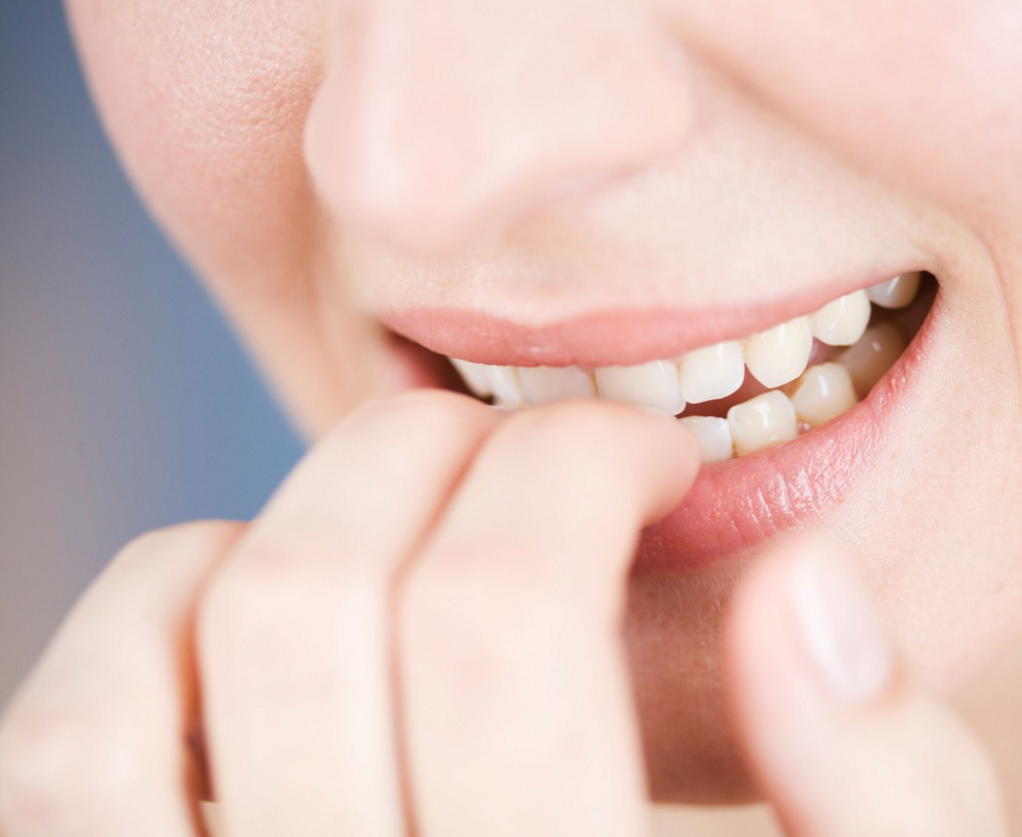Nervous tic: why the eye twitches, causes and treatment
Probably there is no such person who, at least once during his life, did not encounter involuntary blinking of the eyelids, or did not notice this feature in others. Scientifically, this phenomenon is called nervous tic or blepharospasm and is characterized by a rapid uncontrolled monotonous muscle contraction.
The duration of such an attack is up to 10 minutes and tends to self-terminate, however, the duration may increase up to several days.
Content
- Causes of occurrence
- Classification
- At what age does it arise?
- Diagnostics
- Drug treatment
- Exercises for the eyes
- ethnoscience
- Prophylaxis
- Related Videos
Causes of occurrence
The nervous tic of the eye does not carry a serious threat to human life and health, but it is a signal that a malfunction is occurring in the body. Possible factors causing this process include:
- Contact with a foreign object on the mucous membrane of the eye.
- Excessive dryness of the eyes.
- Reaction to light.
- Irritation of the cornea.
- Malnutrition. An imbalance of certain trace elements (glycine, calcium, magnesium) can cause spasms and various types of seizures.
- Incorrect combination of physical activity and rest, insufficient sleep time.
- The consequence of taking certain types of medications.
- Heredity, genetic predisposition.
- Common fatigue associated with insufficient lighting, prolonged time spent in front of a computer monitor or watching TV.
- The most well-known cause of nervous eye tics is stress, mental and emotional disorders. These factors do not cause an immediate reaction, but over time they can cause a response symptomatology.
- Redness of the eyes.
The above reasons do not always lead to involuntary muscle contraction. Sometimes this ailment directly depends on such previously transferred diseases:
- Infringement of the facial nerve.
- Inflammatory processes of the lining of the eye (conjunctivitis).
- ARI.
- ARVI.
- Parkinson's disease.
- Bell's palsy.
- Infection with worms and others parasites.
- Inflammation of the eyelid.
- Birth trauma.
- Oncology of the brain.
- Vegetovascular dystonia.
A nervous tic of the eye affects mainly the psychological state of a person, but sometimes a slight discomfort is felt if the muscle tension increases.
Classification
Nervous tics are usually divided into groups depending on:
- Manifestations - mimic (facial muscles), vocal (vocal muscles), motor (skeletal muscles, arms and legs spasm), sensory (groundless sensations of cold or heaviness in various parts of the body).
- Difficulties - simple (monotonous twitching is characteristic), complex (various muscle groups are involved).
- The prevalence is local (one muscle group is involved), generalized (almost the entire body is affected).
Read also:Alcoholic polyneuropathy (neuropathy)
At what age does it arise?

Symptoms of this ailment can overtake a person at all ages. Its manifestation in adults causes a number of factors such as:
- stress;
- overwork;
- excessive emotionality.
Cope on your own is possible only in the case of an accurate determination of the cause, which must be safely eliminated.
Children also face similar troubles.
According to statistics, this phenomenon is most common in the period from 1.5 to 17 years. The problem is aggravated at 3 years old and from 7 to 11 years old. Boys (about 15%) suffer more than girls (11%).
In order not to start the situation, you need to carefully observe the child and, in case of involuntary twitching, switch attention to other activities or objects. The causes of occurrence can be:
- constant quarrels between parents;
- genetic predisposition;
- overprotection or, conversely, disinterest.
With the manifestation of blepharospasm in children, it is important not to focus on the problem, since they often do not realize their defect and therefore do not experience discomfort, moreover, at this age there is a high probability self-healing.
Diagnostics
When one or another symptoms are found in themselves, each person asks how to get rid of a nervous tic of the eye. To do this, you should visit a qualified neurologist, who will begin the appointment with a banal survey:
- finding out the first attack,
- duration,
- information about past illnesses,
- then the state of the nervous system is assessed.
If the doctor is unable to see firsthand the manifestation of symptoms, a request may be made to record the seizure on video. And also the appointment is likely:
- general blood test (detection of inflammation),
- biochemical blood test (detection of diseases of internal organs),
- radiography,
- computed tomography,
- electroencephalography (assessment of the state of the brain),
- consultation with an oncologist,
- traumatologist,
- psychiatrist.
Drug treatment
To cure a nervous tic of the eye, it is necessary to conduct all the studies and strictly adhere to the recommendations of the observing doctor. The following types of drugs are used:
- Complexes of vitamins and minerals, which contain the required amount of calcium, potassium, iodine, magnesium, selenium and B vitamins.
- Preparations containing blueberries or fresh berries that have a beneficial effect on the eyes.
- Substances that improve blood circulation and metabolic processes in the brain.
- Etiotropic therapy (fight against the underlying disease).
- Botulinum toxins or antipsychotics (symptom relief).
- Psychotherapy sessions (work to overcome fears, feelings of anxiety, self-doubt).
- Surgical intervention. The doctor identifies the most strongly twitching fibers and cuts them.
- Botox. This substance promotes relaxation and stops contractions.
- Massage. It is indicated for normalizing muscle tone, the state of the nervous system and adjusting blood circulation.
Read also:Multiple sclerosis: causes and symptoms
Exercises for the eyes
If a frequent question becomes how to get rid of a nervous tic of the eye, you can resort to the following actions:
- It is necessary to close the eyelids tightly, and then open them with a sharp movement. Continue to do until tears come out.
- Massage the area under the eye, then blink for 30 seconds.
- It is necessary to leave the eyes half-closed until there is no tremor, then blink for 1 minute.
These exercises may not act as the main type of treatment, but will become an assistant in emergency situations.
ethnoscience
You can treat nervous eye tics at home using simple and affordable methods:
- Geranium leaves. They are crushed and applied to the eyelid for 30 - 40 minutes about 6 times a day. Cover the top with a thick cloth, towel or handkerchief.
- Brewing tea, decoction of chamomile or wormwood. Apply to the eyes with a cotton pad for 10 to 12 minutes.
- Anise, plantain, rue. Pour boiling water over 1 tablespoon of each of the herbs and leave for 30 minutes. If desired, add lemon or honey to the infusion and drink 100 ml before meals.
- Chamomile, mint, valerian, lemon balm. Take these herbs in a proportion of 3 tablespoons: 2 tablespoons: 1 tablespoon: 1 tablespoon, respectively, steam in 300 ml of boiling water and leave for 30 minutes. Take in the morning on an empty stomach and before bedtime.
- Herbal infusions instead of tea. The following are used: hops, oregano, plantain, thyme, St. John's wort, mint, lemon balm, nettle, sea buckthorn, rose hips, viburnum. It is useful to make up the fees and take them alternately.
- Taking a bath with sea salt.
- Essential oils. The use of aromatherapy from oil of cinnamon, lavender, geranium can be called effective.
- Compress. A towel moistened with cold water should be applied to the eyes for 20 minutes, which will narrow the blood vessels and relieve the spasm.
Read also:Cephalgic syndrome (cephalalgia): what it is, causes, symptoms and treatment
Prophylaxis
To prevent such a phenomenon as a nervous tic of the eye, you must adhere to simple rules:
- Make adjustments to your diet in the form of the use of such products: buckwheat, dried apricots, raisins, bran bread, parsley, dill, cherries, strawberries, soybeans, any types of nuts, lean meat, cocoa.
- Choose the optimal sleep mode for yourself, which will allow the body to fully recover and be in good shape.
- Maintain a balance between exercise and rest.
- Train your body, do any kind of sport.
- Visit a psychologist, under his supervision to master the skills of self-control.
- Find a hobby that will fill you with positive emotions and improve your mood.
- Start mastering yoga and meditation.
- Surround yourself with positive people and create a good atmosphere.
- Spend as much time as possible outdoors.
You need to eliminate from your life situations that provoke a nervous tic of the eye:
- Drink a minimum of coffee and other stimulating drinks, give up alcohol, drugs and cigarettes.
- Reduce the time spent in front of the monitor or watching TV, especially films and programs with disturbing stories and scenes of violence.
- Being in the company of quarrelsome people.
- Inadequate sleep and rest.
- Stress.
No one is immune from the manifestation of a symptom when the eye twitches, the causes and the treatment of which depend on many factors. The phenomenon itself is not dangerous, but it brings people all sorts of inconveniences and embarrassment in the social sphere, and also serves as a signal for the study of the whole organism and a revision of the way of life.



